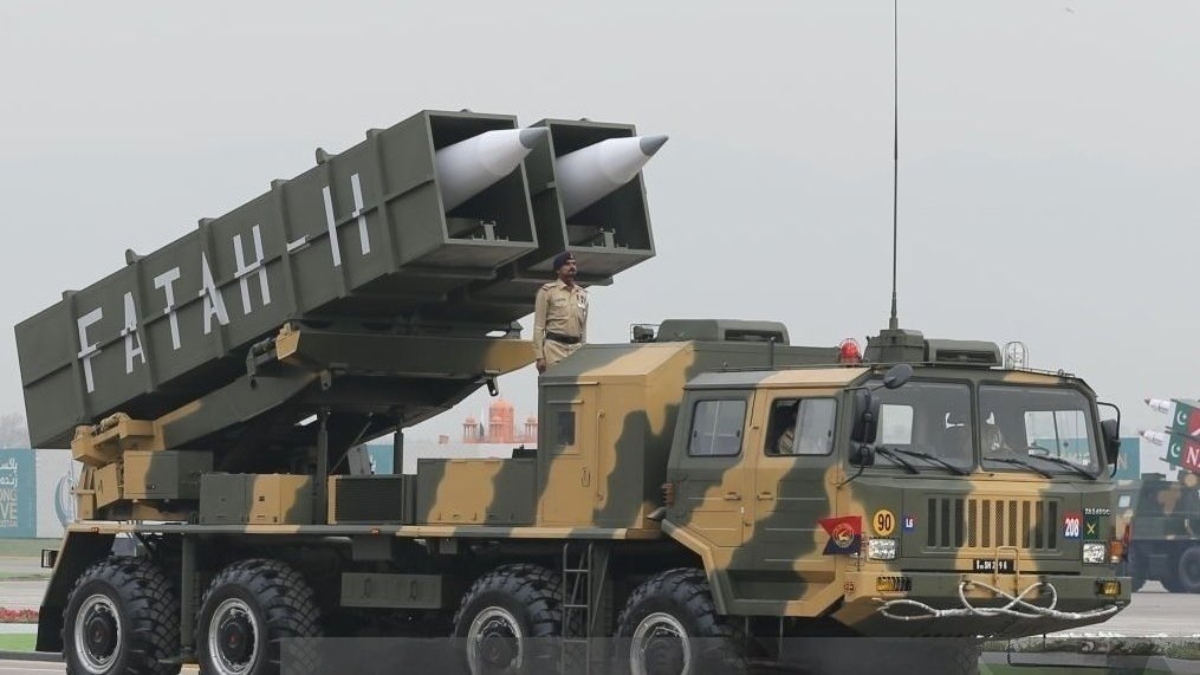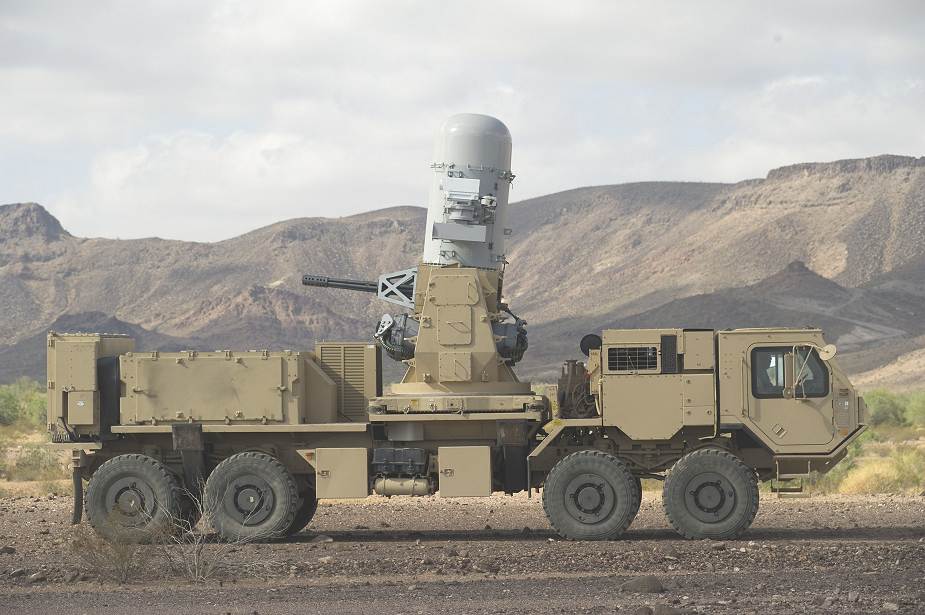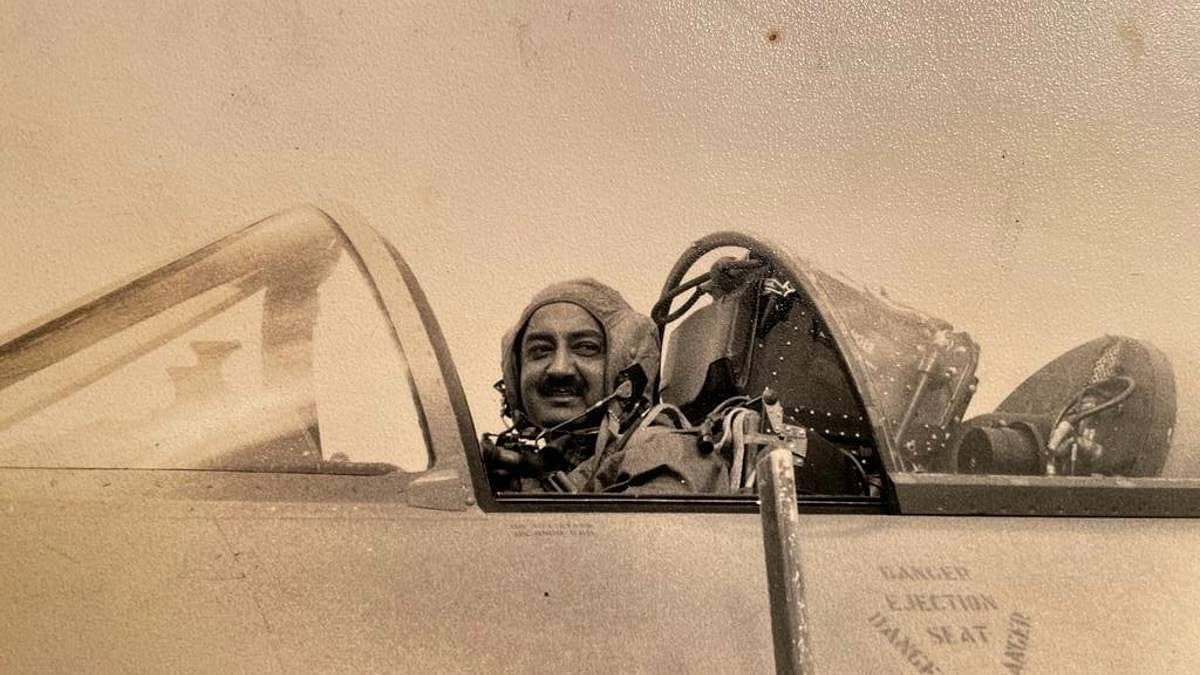AFI
SOURCE: AFI


In a significant development during a recent conflict, the Indian Air Force (IAF) reportedly employed the long-range 40N6E missile, part of its advanced S-400 air defense system, to target a Pakistan Air Force (PAF) SAAB Airborne Warning and Control System (AWACS) aircraft. According to sources close to idrw.org, the engagement, which occurred at an unprecedented range of nearly 300 km, forced the PAF to drastically reduce the operational use of its AWACS fleet, altering the dynamics of the aerial theater.
The 40N6E missile, designed for the Russian-made S-400 Triumf system, is capable of engaging targets at distances up to 400 km, making it one of the longest-range air defense missiles in the world. IAF sources indicate that the S-400’s sophisticated radar systems detected the PAF’s SAAB AWACS operating well within Pakistani airspace, at a standoff distance of approximately 300 km. In a bold move, the IAF launched a single 40N6E missile, the debris of which was later found in Pakistan’s Khyber Pakhtunkhwa region.
Continue readingSOURCE: AFI


In a recent report, John Spencer, chair of urban warfare studies at the Modern War Institute (MWI) and codirector of MWI’s Urban Warfare Project, has called for a comprehensive overhaul of U.S. military capabilities, pointing to India’s remarkable advancements in defense technology and strategy as a model for emulation. Highlighting India’s mastery of “the physics of lethality,” Spencer argues that the United States can draw critical lessons from India’s cost-effective, high-performance systems and their proven success in real-world conflicts.
India’s defense ecosystem has rapidly evolved, blending cutting-edge technology with strategic pragmatism. A prime example is the BrahMos missile, a supersonic cruise missile co-developed with Russia but now predominantly manufactured in India. Priced at approximately $4.85 million per unit, the BrahMos is more expensive than the U.S. Tomahawk missile, which ranges from $1 to $2.5 million depending on the variant. However, the BrahMos offers unparalleled performance, achieving speeds of nearly Mach 3 and delivering superior kinetic impact. This combination of speed and precision provides a distinct tactical advantage, enabling rapid, devastating strikes that outmatch slower subsonic systems.
Continue readingSOURCE: AFI


Pakistan’s much-touted Fatah-II guided rocket system, often dubbed the “S-400 Slayer” by Pakistani defense analysts, has met a humbling fate at the hands of India’s air defense systems. In a recent escalation along the Line of Control (LoC), the Indian Air Force (IAF) successfully intercepted and neutralized multiple Fatah-II rockets using its Medium-Range Surface-to-Air Missile (MR-SAM) and the indigenous Akash Mk1 systems. This development has significantly undermined Pakistan’s claims of the Fatah-II’s ability to penetrate India’s formidable S-400 air defense network, revealing a stark gap between rhetoric and reality.
Since its first test in December 2023, followed by a training launch in May 2024, the Fatah-II has been a point of pride for Pakistan’s military establishment. Developed by Global Industrial & Defence Solutions (GIDS), the Fatah-II boasts a range of 400 km, advanced avionics, and a flat trajectory designed to evade radar detection. Pakistani analysts, including Umair Aslam of Global Defense Insight, have hailed the system as a game-changer, claiming it could neutralize high-value Indian assets like the S-400 through saturation attacks. These attacks, they argued, would combine Fatah-II rockets with cruise missiles and loitering munitions to overwhelm India’s defenses. The narrative of the Fatah-II as an “S-400 Slayer” gained traction, with Pakistani military officials asserting its ability to target critical infrastructure and air defense units deep within Indian territory.
Continue readingSOURCE: AFI


The Indian Army has recently issued a call to industry, inviting proposals for the development of anti-personnel warheads specifically designed for deployment via drones. This move signals a strategic push to enhance the Army’s precision strike capabilities, leveraging the growing role of unmanned aerial systems (UAS) in modern warfare. As India intensifies its focus on self-reliance in defense technology, this initiative underscores the military’s intent to integrate advanced drone technology into its tactical operations, particularly for counter-insurgency and border security missions.
The Army’s request for proposals comes amid a broader modernization drive, spurred by lessons from global conflicts like the Russia-Ukraine war, where drones have proven transformative in delivering precision firepower. The anti-personnel warheads are expected to be compatible with a range of drones, including First Person View (FPV) and kamikaze drones, which the Army has been actively integrating into its arsenal. A recent demonstration of a wire-guided, jam-proof FPV drone, showcased on April 13, 2025, highlighted India’s progress in this domain. That drone, with a range of 2-10 km and plans for an optical fiber variant extending to 20 km, was noted for its ability to deliver small but lethal payloads, such as fragmentation warheads, to neutralize threats while minimizing risks to troops.
Continue readingSOURCE: AFI


Hindustan Aeronautics Limited (HAL) has confirmed that it expects to receive orders for 143 Advanced Light Helicopter (ALH)-Dhruv units in the coming months from the Indian Armed Forces’ Tri-services (Army, Navy, and Air Force). This development follows HAL’s successful resolution of technical issues associated with the wheeled variant of the ALH-Dhruv, boosting confidence in the platform’s reliability and performance.
The ALH-Dhruv, a versatile multi-role helicopter designed and developed by HAL, has been a cornerstone of India’s indigenous defense manufacturing efforts. With these anticipated orders, the total number of ALH-Dhruv helicopters entering production is set to surpass the significant milestone of 500 units. As of June 2024, HAL had already produced 345 ALH-Dhruv helicopters, with an additional order for 34 units placed in March 2024, bringing the current tally to 379 units either delivered or under production.
Continue readingSOURCE: AFI


In a significant boost to India-Malaysia defense cooperation, Delhi-based Samtel Avionics has signed a strategic collaboration and exclusivity agreement with Malaysia’s Aerospace Technology Systems Corp (ATSC) to provide comprehensive avionics support for the Royal Malaysian Air Force (RMAF) fleet, with a particular focus on the Sukhoi Su-30MKM fighter jets. The agreement, announced on May 22, 2025, aims to deliver cutting-edge avionics systems, repair and overhaul (MRO) services, and post-sales support, reinforcing India’s growing stature as a global defense technology provider.
Under the terms of the agreement, Samtel Avionics, a leading Indian aerospace and defense firm, will collaborate with ATSC, a key MRO provider for the RMAF, to enhance the operational capabilities of Malaysia’s Su-30MKM fleet. The partnership leverages Samtel’s expertise in advanced avionics, including Multi-Function Displays (MFDs) and Head-Up Displays (HUDs), which are already integrated into the Indian Air Force’s Su-30MKI fleet. This collaboration builds on Samtel’s earlier contract with the RMAF in October 2024 to equip all 18 Su-30MKM jets with MFDs and HUDs, further modernizing Malaysia’s air combat capabilities.
Continue readingSOURCE: AFI


Garden Reach Shipbuilders & Engineers Ltd. (GRSE), a leading Government of India undertaking under the Ministry of Defence, has achieved a significant milestone by becoming the lowest bidder (L1) for the construction of eight Next Generation Corvettes (NGC) for the Indian Navy. The announcement was made in a regulatory filing to the National Stock Exchange of India Limited (NSE) and BSE Limited on May 22, 2025.
In a meeting convened by the Commercial Negotiation Committee (CNC) of the Ministry of Defence (MoD) on May 21, 2025, in New Delhi, GRSE emerged as the L1 bidder for the prestigious NGC project. The company will be awarded the contract to build five of the eight corvettes at an estimated value exceeding ?25,000 crores. This development underscores GRSE’s growing prominence in India’s defence manufacturing sector and its expertise in delivering advanced naval vessels.
Continue readingSOURCE: AFI


China’s Jiutian SS-UAV, heralded as the world’s first “drone mothership,” has been pitched as a revolutionary leap in aerial warfare, promising to unleash swarms of drones from high altitudes to dominate battlefields. But before we get swept up in Beijing’s bold claims, let’s take a hard, critical look at this so-called game-changer. Is the Jiutian truly a paradigm shift in military technology, or is it an overhyped, oversized target waiting to be obliterated by modern air defenses? Spoiler alert: the latter seems far more likely.
The Jiutian SS-UAV, developed by China’s state-owned AVIC, boasts an 82-foot wingspan and a 16-tonne frame, designed to operate at altitudes up to 15,000 meters and deploy swarms of smaller drones for reconnaissance, strike, or electronic warfare missions. On paper, it sounds formidable—a mothership soaring above conventional threats, releasing a cloud of drones to overwhelm adversaries. But in the real world, this concept is riddled with vulnerabilities that make it more of a liability than a battlefield dominator.
Continue readingSOURCE: AFI


Top officials from the Prime Minister’s Office (PMO) and the Ministry of Defence (MoD), along with the Secretary of Civil Aviation, have conducted a high-level review of operational bottlenecks at the Defence Research and Development Organisation’s (DRDO) Aeronautical Test Range (ATR) facility in Chitradurga, Karnataka. The delays, primarily attributed to the short-sighted stance of the Airports Authority of India (AAI), have significantly impacted critical flight trials of sensitive defense programs, raising concerns about India’s defense R&D timelines.
The ATR facility, established to support the testing and validation of indigenous defense platforms, including unmanned aerial vehicles (UAVs) and other aerospace systems, has faced persistent challenges due to airspace restrictions and coordination issues with AAI. These bottlenecks have hampered the progress of key DRDO projects, critical to India’s self-reliance in defense technology under the Atmanirbhar Bharat initiative.
Continue readingSOURCE: AFI


Garden Reach Shipbuilders & Engineers Ltd. (GRSE) has marked a significant milestone in India’s defense manufacturing landscape with the successful completion of sea acceptance firing trials for the indigenous Naval Surface Gun (NSG) 30mm. The trials, conducted with pinpoint accuracy using an advanced indigenous Electro Optical Fire Control System, were carried out onboard a GRSE-designed and constructed Anti-Submarine Warfare Shallow Water Craft (ASW SWC).
This achievement underscores GRSE’s strategic evolution from a premier shipbuilding entity to a capable weapon manufacturing company, bolstering its contribution to India’s self-reliance in defense. The NSG 30mm, a highly accurate and reliable weapon system, is poised to become a formidable addition to the Indian Navy’s arsenal of advanced weaponry.
Continue readingSOURCE: AFI


In recent years, the escalating use of drones in modern warfare has transformed the security landscape along India’s volatile borders with Pakistan. The increasing frequency of Pakistani drone incursions, particularly along the Line of Control (LoC) and the international border in Punjab and Jammu, underscores the urgent need for India to develop or acquire a Counter-Rocket, Artillery, and Mortar (C-RAM) type system tailored to neutralize these aerial threats. Such a system would significantly enhance India’s ability to safeguard its airspace and protect critical military and civilian infrastructure from drone-based attacks.
Drones have emerged as a strategic tool for Pakistan, employed for both kinetic operations—such as targeted strikes—and non-kinetic activities, including smuggling drugs, arms, and counterfeit currency across the border. The 2021 drone attack on the Jammu Air Force Station, where low-flying drones dropped improvised explosive devices (IEDs), exposed vulnerabilities in India’s air defense against small, commercially available unmanned aerial vehicles (UAVs). More recently, during the 2025 India-Pakistan tensions following Operation Sindoor, Pakistan launched hundreds of drones, including Turkish-made models, to target Indian military installations across 15 locations, from Srinagar to Bhuj. These incidents highlight Pakistan’s growing reliance on drone swarms to test India’s air defense systems and gather intelligence.
Continue readingSOURCE: AFI


India’s indigenous Integrated Drone Detection and Interdiction System (IDD&IS MK1), also known as D4, has emerged as a pivotal asset in the nation’s air defence arsenal. Developed collaboratively by the Defence Research and Development Organisation (DRDO) and Bharat Electronics Limited (BEL), this laser-based anti-drone system demonstrated exceptional performance during the recent Operation Sindoor, effectively neutralizing multiple low radar cross-section (RCS) drones deployed by Pakistan.
These capabilities enable the system to detect, track, and neutralize drones with minimal radar signatures, ensuring comprehensive protection against aerial threats.
Continue readingSOURCE: AFI


Group Captain Suranjan Das (1920–1970), one of India’s most revered test pilots, left an indelible mark on the nation’s aerospace history through his fearless contributions to the Indian Air Force (IAF) and Hindustan Aeronautics Limited (HAL). As Chief Test Pilot at HAL, Das played a pivotal role in the development of India’s first indigenous fighter aircraft, the HF-24 Marut, and was instrumental in the acquisition of iconic aircraft like the Canberra, Hunter, and Mystere for the IAF.
Tragically, his life was cut short on January 10, 1970, during a test flight of an HF-24 prototype, but his legacy endures, honored by the posthumous conferment of the Padma Vibhushan, India’s second-highest civilian award. This article explores Das’s extraordinary career, his contributions to Indian aviation, and the enduring impact of his sacrifice.
Continue readingSOURCE: AFI


The Chakra Dialogues Foundation (CDF), a think tank established by former Indian Air Force (IAF) pilot Wing Commander Satyam Kushwaha (Retd), has released a comprehensive report detailing the strategic and operational losses incurred by the Pakistan Air Force (PAF) during India’s Operation Sindoor in April-May 2025.
Leveraging real-time intelligence, surveillance, reconnaissance (ISR) data, cross-verified media reports, and classified budgetary tenders, the report provides a high-confidence estimate of the damages sustained by the PAF, pegging the total financial impact at $3.35732 billion USD.
Continue readingSOURCE: AFI


The Indian Ministry of Defence (MoD) is poised to greenlight the bulk procurement of the indigenously developed Smart Anti-Airfield Weapon (SAAW), a precision-guided glide bomb designed by the Defence Research and Development Organisation (DRDO). This move comes amid heightened regional tensions, with unverified claims of the weapon’s use in a recent strike on Pakistan’s Rahim Yar Khan airbase, underscoring its strategic importance.
The SAAW is a lightweight, long-range precision-guided munition designed to neutralize enemy airfield infrastructure, including runways, taxi tracks, radars, bunkers, and aircraft hangars, with a range of up to 100 kilometers. Weighing approximately 125 kilograms, the SAAW is equipped with advanced navigation systems, including satellite-based INS-GPS and, in its latest iterations, an electro-optical (EO) seeker with Imaging Infrared (IIR) technology for enhanced precision. The weapon’s ability to strike targets with a Circular Error Probable (CEP) of less than 15 meters makes it a potent tool for the IAF to engage high-value targets from a safe distance, minimizing exposure to enemy air defenses.
Continue reading